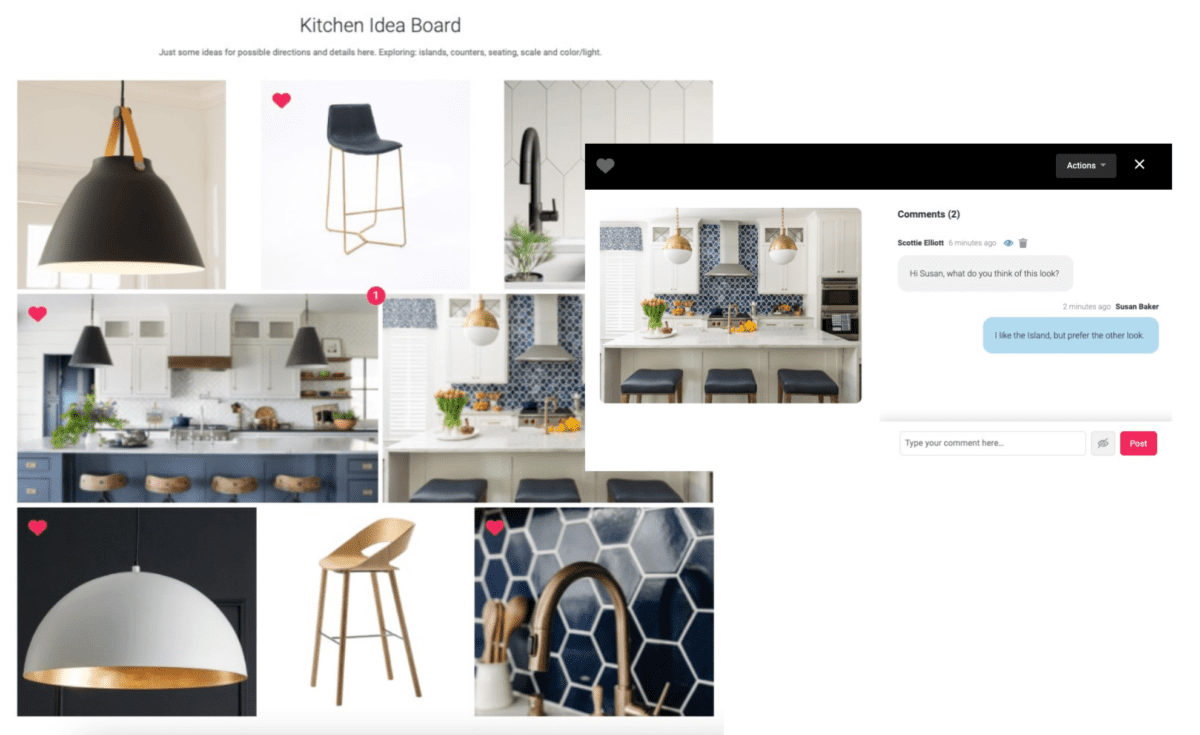Clear and concise communication builds strong relationships and is one of the important factors in the longevity and success of a design firm. Articulating ideas and goals in an engaging and exciting way is a useful skill that helps retain clients. Effective speakers know that time is valuable and results even more. Therefore, maintaining transparency while staying professional in your client communication is crucial.
Designing a project and overseeing its execution is a daunting task. Be it the principal architects, juniors, consultants, visualizers, vendors, and even the clients; everyone has a unique role to play in completing a project. As an individual, the drive to contribute and make a distinctive impact exists amongst all the stakeholders. However, an ever-increasing demand with jam-packed deadlines can create a gap in communication, where the outpouring of information often gets “Lost in Translation”.

The U.S Bureau of Labor Statistics (BLS) has stated that Architecture jobs will grow by 8% from 2018 to 2028, reassuring a promising future for the AEC industry. The reason behind this growth is increasing demand in various sectors from residential, retail, and commercial to health and hospitality. This surge in demand requires an expanded team to manage the growing clientele.
How can we merge the communication gap between designers and clients? Can we establish systems for concise and clear communication? Through this piece, we will cover problems that may arise due to a communication gap and how we can better tackle them.
Top 8 Issues Designers face When it Comes to Client Communication
1. Dependency on Multiple Mediums
Emails, phone calls, video conferencing, and physical meetings; are several means of communication that can lead to a dependency on multiple mediums. But is it always effective? Aren’t we all stormed with emails that say, ‘Don’t print this and stay eco-friendly’, not realizing the negative impact of threads? A high volume of information coming from several directions can widen the communication gap.
2. Multiple Offices Multiply the Gap
The COVID era paved the way for global collaboration, leading to multiple offices in different countries. It also opened doors to working with clients from all over the world. While this was a learning experience, working with cross-country clients came with its challenges. The dependency on technological support is multi-fold and not all software, spreadsheets, and project management boards do justice to the niche needs of the international design industry.
3. Surpassing the Language Barrier Between Clients and Designers
Clients usually have a hard time understanding the technical language used for a project. Sometimes this barrier can extend the project timelines. It is a necessity to convey your thoughts to the client while ensuring that it coincides with what they have in mind. Moreover, setting boundaries on the scope of work, design delivery, and involvement is equally important to respect everyone’s time.
4. Lack of Timely Updates
Lack of timely communication and updates to the client gives them the sense that they are being ignored. Sometimes, it can even make the clients feel less important in comparison to the other active projects.
5. Intergenerational Gaps
In reference to the generational gap within today’s studio culture, Architect Luke Arehart stated, “There is a Grand Canyon–esque divide that exists between the baby boomer and millennial generations within architecture. Current principals and firm owners have paid their dues for many years and have worked effectively, diligently, and meticulously toward truly understanding the practice of architecture. However, those hard lessons learned over time are sometimes not easily parted with or readily shared.” A design team consists of a multi-generational group with distinctive ideas for a project, a disconnect in their communication can often lead to issues. Fostering intergenerational communication within your team is equally important to elevate the client’s experience.
6. Materials Libraries that Lack Standardization and Collaboration
If you ask any designer or vendor where the core of the communication gap lies; they will point you towards the materials section. The traditional system of right-clicking and saving our images in a desktop folder prevents you from sharing data amongst the team. It also involves running to each other’s computers or hoarding resources on your desktop. The lack of a digital library with an organized cloud-based system for the team to share their resources is a pressing issue.
7. The Era of Video Conferencing
We live in a world where video conferencing is the main way of connecting multiple teams and clients. But what about the number of hours spent on these tools to effectively communicate and delegate tasks?
8. Staying Within the Budget
Clients need a value-based outcome over a merely beautiful design. Many times, misconceptions due to a communication gap can also lead to revisions that can increase the budget.
10 Ways to Bridge the Communication Gap with Your Clients
Every client is a unique case and there are multiple ways to effectively communicate with each one of them. With the help of collaborative tools, you can enhance your clientele’s experience. Let’s look at some of the different stages of the design process and how we can tackle them with more effective communication.
1. Outreach and Pitch Meetings
The first time you’re introduced to your client is usually during the outreach stage. After you create a basic foundation, you can address your studio’s philosophies. Talk to them about the passion and enthusiasm you feel for the project. Be candid and show genuine interest in what they seek. When you convey your design philosophy and thoughts from the start, the client knows what they’re getting into. A good start can help make sure that everyone stays on the same page in the long run.
2. Onboarding a Client
The best way to clarify your communication during the onboarding stage is to set realistic deadlines. Rather than taking them through the entire design process, create milestones at various stages. Keep it concise and continue these meetings after every milestone. This way the client is well-informed without getting overwhelmed.
3. Conceptual Visualization
This stage marks the start of your designing process with stirring conversations, rough sketches, briefs, program sheets, and more. The best way to communicate in this stage is by creating precise design briefs. If your design briefs are too long, it can leave more room for different interpretations. If they’re too short or vague, the conversation can drift from the core purpose. The idea here is to keep your written data as clear and concise as possible.

While communicating your rough ideas to the client, utilize tools that make it easier for them to visualize. Bjarke Ingels Group is famously known to be the storyteller, with engaging graphics and visuals. They present schematic diagrams and SketchUp-style renderings to the clients in the early stages. It helps the clients to have a clear vision of the scale, mass, form, and volume of the project. Seeing the success of this model, many firms have started incorporating these diagrams in their client meetings.
Sharing visual conceptualizations of the project at each stage can also be a time-saver in the long run. When the client can effectively visualize the ideas early on, this helps to avoid large-scale changes in the later stages. Moreover, you can incorporate their input from time to time, making the design more relevant to the client’s needs.
4. Regular Client Meetings
Before in-studio meetings with your clients, create an agenda and list of topics to discuss. Attach these to the invitations so the design team and the clients can gather their thoughts ahead of time. If the meeting starts getting off track, you can often steer the conversation back to the agenda items.
5. Finding Materials that Match Your Designs
Many stages of a designer’s job have been upgraded by technology in recent years. The only one left behind is the material and specification process. Sourcing, tracking, and managing the nitty-gritty of the material world through clumsy product catalogs or google searches is a lengthy task.
The material process also brings product vendors and suppliers into the picture. More people, more gaps in communication. As tough as this process seems, it can be made accessible.
Build a framework for better communication by utilizing a comprehensive cloud-based material library and specifications data that is easy to access for all the stakeholders. Set up a standardized format that can be revisited and reused for every project.
There are several collaborative tools available to source your products from various suppliers and websites within a fraction of the time. These tools can help you manage your work under a single dashboard.
6. Issuing Purchase Orders and Creating Detailed FF&E Docs
Working with third-party vendors and discussing material details with clients requires an open communication line. When it comes to issuing several purchase orders and detailed FF&E documents, standardization with templates saves time and improves the quality. It can simultaneously help your vendors and clients to understand product details. The best way to achieve this is by adopting a cloud-based hub that negates the need for downloads or upgrades.
7. Budget Management
A Colonial Life survey found that nearly 40% of workers have reported that they feel ‘high’ to ‘moderate’ levels of stress that distract them from work and lessen their productivity. The strict deadlines and tight budgets faced in the AEC industry are sure to add to this pressure in the workplace.
To ease some of the budget-related stress, keep track of your project spending at every stage. Budget management tools and apps can be the best solution. They even notify you when you’re close to the budget amount. Make sure that at every milestone meeting, budgets are openly discussed to keep your clients in the loop.
8. Error Management
Executing a design is a humongous responsibility where errors are bound to happen. And if they are ignored, it can lead to a bigger issue. Try to be cautious from the start by streamlining your processes through collaborative tools. Create BIM models, diagrams, and digital twin prototypes to analyze your designs.
Delivering bad news of a setback is never easy, but in case that happens, try to be empathetic and clear with your client. Use an apologetic tone while explaining and have a solution in hand. If there’s no solution, be honest rather than promising what you cannot deliver.
9. Documentation, Branding & Promotions
In the age of the Metaverse and the digital realm, promoting your projects and branding your studio is equally important. These promotional campaigns have also helped clients, especially in the residential, commercial, and retail sectors. Communicate these mutual benefits to your clients, and ask them for permission to publicly document the project. Discuss how they wish to promote it so there are no discrepancies in later stages.
Using Digitalization to Streamline Client Communication
The pandemic has changed the world drastically, but it has also brought us closer. New technology and the digitalization of our work process have evolved our communication for the better.

Image: Gather Screenshots – Vision Board and Chat Feature
The traditional binder systems are losing their relevance as cloud-based hubs are turning out to be trusted resources. This method simplifies your material library and provides comprehensive product data on material types, prices, and specifications at the click of a button. Having your data under one umbrella can help you work with clients as their partners, nurturing long-lasting relationships.
That is why we have built Gather—an interior design project management software that enables design teams to share resources, communicate efficiently and create standardized specifications. It is built especially for the architecture and interior design industry to bridge the communication gap between designers, vendors, and clients, making design accessible to everyone via our innovate ff&e software.
Learn More about Gather’s Features Here and start a Free Trial to see how Gather can help you (and your team) become more efficient.



